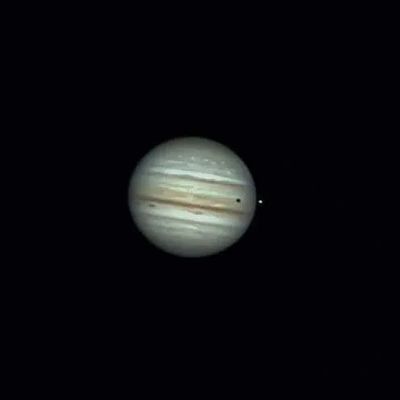What's Up In The Sky Now?

October, 2025
Our Solar System - notes by DMAS member, JoAnn Cogil
“Give me nights perfectly quiet…and I am looking up at the stars.” – Walt Whitman
Mercury
MERCURY - reaches greatest eastern elongation (farthest distance from the Sun) on the 29th. This provides the best time for viewing as the little planet is at its highest point above the evening horizon sky, just after sunset, but it can be tough to see.
Venus
VENUS - is making its way toward its January 2026 solar conjunction when this bright planet will be found between the Earth and the Sun. Until then, it remains a beautiful object to greet us each morning, as it rises before sunrise with the Moon close by.
Earth
Earth - We welcome Fall and cooler temperatures!!
Mars
MARS - is still found low in the west, setting right behind the Sun, and is also heading towards a solar conjunction in January 2026. On October 19th, Mars and Mercury are close to each other as they set in the west.
Jupiter
JUPITER - is now rising just after midnight until the end of the month when it will then rise before midnight. On the 14th look for a triangle in the night sky formed by Jupiter, the Moon and Pollux, again after midnight. What a sight to see!!
Saturn
SATURN - We began to enjoy the ringed planet in September as it rose in the late evening sky and now in October, we won’t have to wait so long for it to clear the trees east of the domes!! Saturn will have a close encounter with the Moon on the evening of the 5th, in the E-SE sky. This is the Moon’s closest pairing with any planets all month. The rings are still quite edge-on, but we have been able to see them with telescopes, which has pleased our Ashton visitors and DMAS members.
Uranus
URANUS - now rises about 2 hours after sunset and enjoys close quarters with the Pleiades this month.
Neptune
NEPTUNE - will stay close to the northeast of Saturn and is visible all month. Lately, this has been a much-requested object and favorite view for Ashton visitors.
The Moon
- 06 – FULL moon at 10:47 P.M. CDT
- 13 – 3rd / last quarter
- 21 – NEW moon at 7:25 A.M. CDT
- 29 – NEW at 1:08 A.M. CDT
- 31 – 1st quarter
This month’s full moon is known as the Hunter’s Moon when game is fat and ready to be hunted. Some say the October full moon is also called a Harvest Moon, as October’s full moon is closest to the September Equinox. This name coincides every 3 years with both the September & October full moons. Other names are Falling Leaves Moon, Freezing Moon and Drying Rice Moon.
On the 9th, our Moon has a special trip through the Pleiades, in the constellation Taurus the Bull. The show begins about 9:00 P.M. CDT and continues for a few hours. Get out your hot chocolate and a comfy chair for this performance!!
Meteor Showers
- Draconids – is a minor meteor shower with about 10 meteors per hour. It runs from October 6-10 and peaks on the 7th. Best viewing for this meteor shower is early evening, which is better timing than most meteor showers. The full moon on the 6th will create lots of glare and will impact viewing. These meteors are from dust grains left behind by Comet 21P Giacobini-Zinner which was first discovered in 1900.
- Orionids – is an average meteor shower with about 20 fast-moving meteors per hour. Meteors can be seen from October 2nd through November 7th and will peak on the night of October 21st-22nd with best viewing after midnight. This is an excellent year to observe Orionids meteors as the Moon is new on peak night!! Oh, love those dark nights! These meteors are from dust grains left by Comet Halley, which has been seen/observed since ancient times.
Comet Watch
- 47P/Ashbrook-Jackson – is a periodic comet (which are comets with orbital periods of 200 years or less) and was discovered in 1956. It is set to appear in our skies about October 29th and may be visible to the naked eye. Guess we will have to wait and see!!
- Comet C/2025 A6 (Lemmon) – its path will bring it closest to Earth on October 20th on its inbound orbit towards the Sun, but it is questionable if it will be bright enough to be seen by the naked eye. Best advice is to find a location with the darkest skies possible. The comet was discovered by Mount Lemmon Survey, using their 60-inch Cassegrain reflecting telescope, equipped with a 10560 x 10560-pixel camera. This telescope is located at the Mount Lemmon Observatory which is northeast of Tucson, Arizona; operated by the Steward Observatory, the research arm of the Department of Astronomy at the University of AZ.